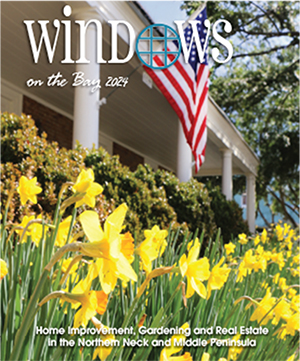by Henry Lane Hull
As this year’s tomato season opens, my thoughts turn to the proverbial good old days when the Northern Neck was a major producer of canned tomatoes up and down the East Coast. Small canneries abounded in our midst, giving employment to many summertime workers. In my childhood, every August my father would go to the Perry factory at Leedstown for a case of its newly produced fruit, which would last us all winter.
Mr. Perry’s was an iconic image from that era. He was one of the Northern Neck’s major farmers, tomato producers and sawmill operators. He worked all year round on one of his industries or another. Mrs. Hinson managed his store, walking to work each day from her home overlooking the Rappahannock. She knew her customers well, and despite the remote location off the beaten path, she had a good trade, often populated by weekenders and summer residents, all of whom thought the food tasted better coming from her store.
Leedstown made its big splash in history over 250 years ago with the adoption of the Leedstown Resolutions, a critical step leading up to the War of Independence, but in the mid-twentieth century, its fame—although local rather than national—rested on the tomato factory, the product bearing the name Leedstown Tomatoes.
Here in the lower Northern Neck, the tomato factory at White Stone Beach developed its own claim to celebrity status. That factory was on a dock out in the Rappahannock, and as the tomatoes were being peeled and cleaned prior to canning, the dregs fell into the river. The plant underwent a major transformation in the 1930s when the Culver family converted it into the resort that it remained for nearly 40 years.
The move was ingenious in that, in its transmogrified state, the former factory became a weekend drawing card for people from Richmond, Washington, Baltimore and Hampton Roads.
The former workers’ quarters, also over the water, became the new guest motel. The vast, over-the-water cannery became the restaurant and dance floor. Bands came from the urban areas to entertain the guests, who often would include Senators and Congressmen coming for the weekends. White Stone Beach, in a sense, became Washington’s introduction to the Northern Neck.
In addition to the idyllic setting on the river, the tourists came for the wonderful food. A meal at Culver’s was truly memorable. The dinners often went on into the night well past midnight. Mrs. Culver’s crab cakes and soft crabs were the rage. The bigwigs from Washington enjoyed mixing with the local folks, which enabled them to learn about the area. Many later came back to keep their boats here and ultimately to retire here.
Today the Culver operation has passed into history, leaving no trace of its once mighty presence on the shores of the Rappahannock. Driving down there, one beholds a natural setting that gives no clue as to the dynamism that once sparked the location. As the years have passed and nature has reclaimed the site, memories are all that the patrons have left.
Culver’s was perhaps the most vibrant example of how a tomato factory could morph into a new career. Gradually, most of the factories closed, and none of the others made the dramatic switch to becoming a dance floor. The tomato industry moved over to Hanover County, leaving us to grow the product individually or for sale at roadside stands, but not to be processed locally.
Perhaps as artisan tomatoes continue to grow in popularity, we might see a resurgence of canneries following to develop a new market.











